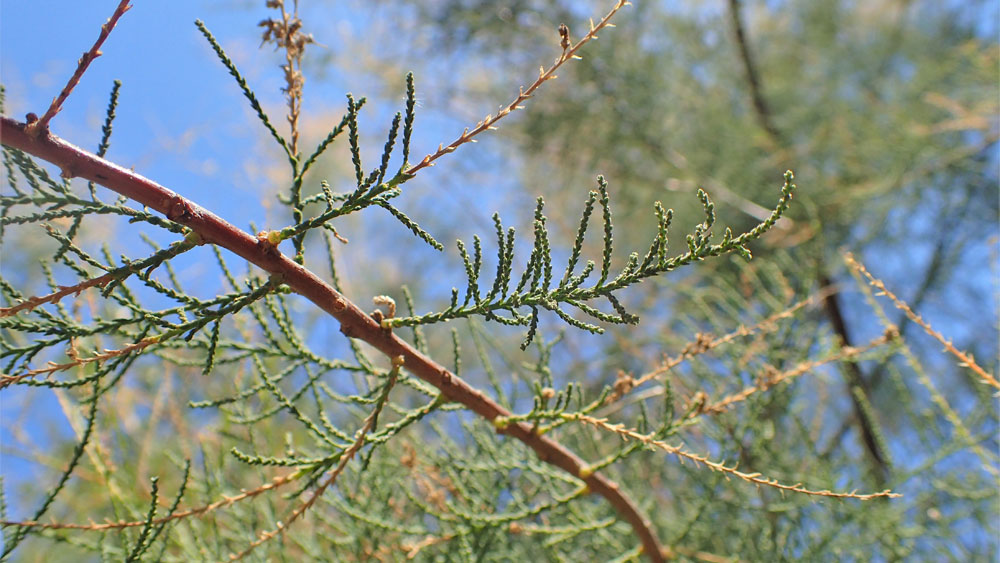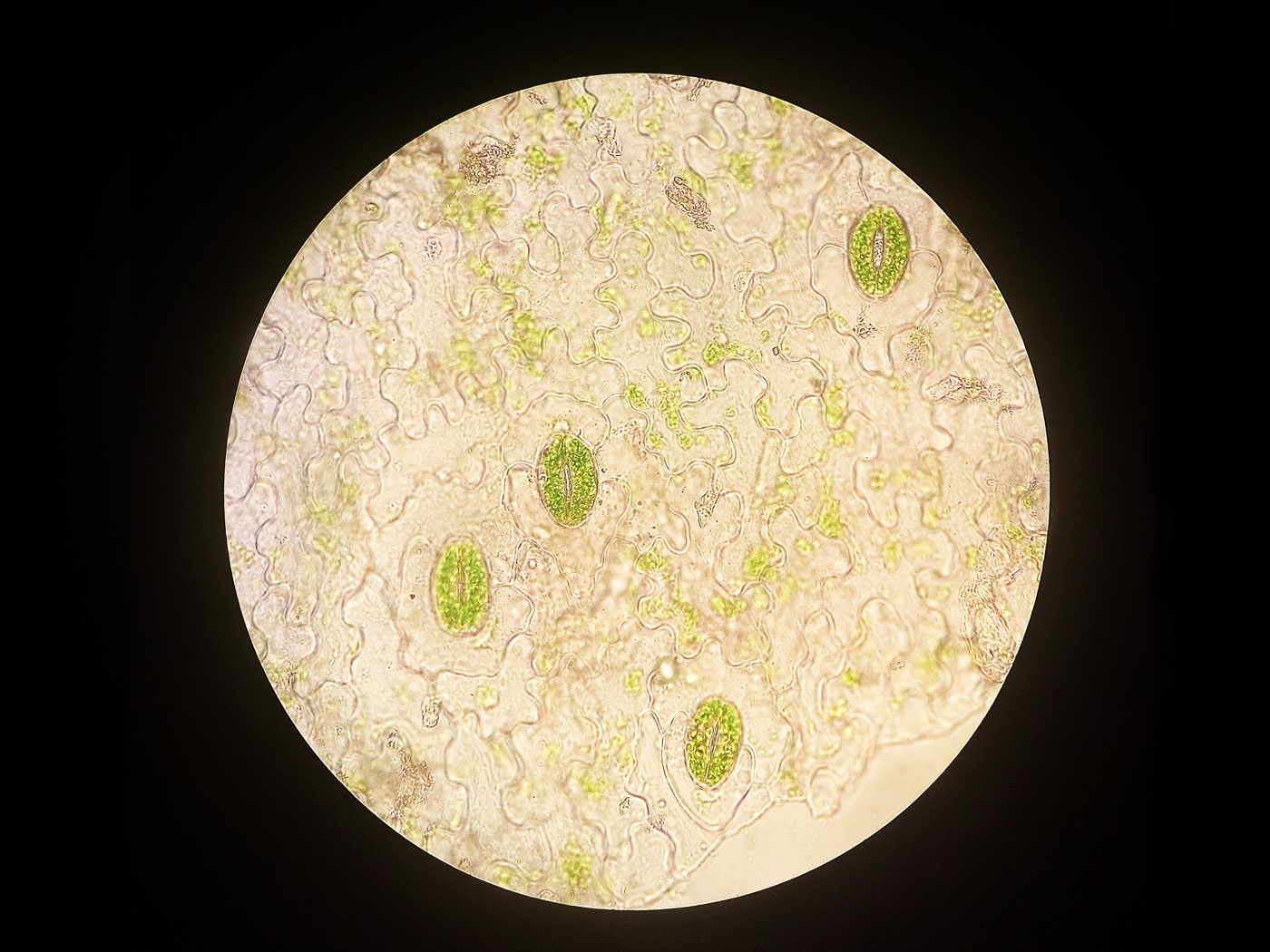Although plants aren’t alive in the biblical sense,1 they are most certainly complex in their physiology and anatomy.2,3 Some plants have been designed by our Creator Jesus Christ to endure and even proliferate in formidable areas such as the desert.
Recently, Marieh Al-Handawi of New York University Abu Dhabi studied a water condensate on briny crystals on the Athel tamarisk (Tamarix aphylla), a plant that flourishes in salty desert soils. Tamarisk is known as a halophyte, a desert shrub designed to secrete excess salt in droplets from structures in its leaves.
Al-Handawi and her team members stated in the Proceedings of the National Academy of Sciences that the Athel tamarisk “survives in arid, hypersaline conditions by excreting concentrated solutions of ions as droplets on its surface that crystallize into salt crystals and fall off the branches.”4
As a desert day progresses, the tamarisk becomes encrusted in white crystals. Al-Handawi thought the chemicals of the excreted salts might have something to do with the dew from this plant. Science News reported:
To investigate, Al-Handawi and her team recorded time-lapse videos of Athel tamarisk plants in their natural habitat. These recordings showed that salt crystals that form from daytime excretions swell with water at night. Back in the lab, the researchers found that at 35° Celsius and 80 percent relative humidity, a naturally encrusted branch collected 15 milligrams of water on its leaves after two hours, while a washed branch yielded only about one-tenth as much.5
Furthermore, the scientists discovered
…more than 10 different types of salt all crystallized together. These crystals are made mostly of sodium chloride and gypsum. Yet the researchers also spotted traces of a secret ingredient: lithium sulfate. This mineral is exceptionally good at taking in water and at much lower humidity than either sodium chloride or gypsum.5
With further research it was determined that these salts absorb condensation into the leaves. Science News spoke of these “desert plants hav[ing] evolved intricate chemical strategies to squeeze every last drop of water from the environment…and most of those systems await discovery.”5
But the plants themselves somehow evolving these abilities via blind chance, mutations, and natural processes (e.g., natural selection) cannot, even in the fullness of time, produce these clever and “intricate chemical strategies.”
Creationists already have the clear answer to these stratagems: continuous environmental tracking.6 These chemical tactics were built into the tamarisk’s genome in the beginning so that it’s able to move in and fill harsh desert environments.
This does not mean, of course, that we just throw up our hands and say God did it. It should, instead, stimulate creation scientists to conduct research and investigations regarding the details of how this survival is possible.
Such an amazing capability to subsist in the harsh desert causes one to reject the tired, just-so “plants have evolved” explanation and consider the possibility that it was engineered by an all-wise, all-powerful Creator.
References
- Morris, J. 1991. Are Plants Alive? Acts & Facts. 20 (9).
- Tomkins, J. P. Plants Use Math to Ration Food Use. Creation Science Update. Posted on ICR.org July 10, 2013, accessed November 6, 2023.
- Thomas, B. Engineer Envies Plant Cell Structure. Creation Science Update. Posted on ICR.org August 22, 2012, accessed November 6, 2023.
- Al-Handawi, M. B. et al. 2023. Harvesting of aerial humidity with natural hygroscopic salt excretions. Proceedings of the National Academy of Sciences. 120 (45): e2313134120.
- Remmel, A. Salty sweat helps one desert plant stay hydrated. Science News. Posted on sciencenews.org October 30, 2023, accessed November 5, 2023.
- Continuous Environmental Tracking. Institute for Creation Research. Posted on ICR.org/cet.
Stage image: Tamarix aphylla in Botanical Park of Crete
Stage image credit: Copyright © Krzysztof Ziarnek, Kenraiz, 2019. Used in accordance with federal copyright (fair use doctrine) law. Usage by ICR does not imply endorsement of copyright holder.
* Dr. Sherwin is science news writer at the Institute for Creation Research. He earned an M.A. in zoology from the University of Northern Colorado and received an Honorary Doctorate of Science from Pensacola Christian College.





















